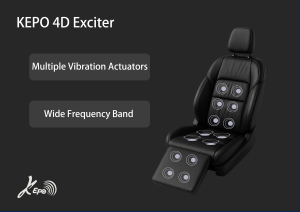As the world transitions towards greener transportation, electric vehicles (EVs) are becoming increasingly popular. However, the quieter nature of electric vehicles compared to traditional internal combustion engine vehicles presents a safety concern for pedestrians and other road users. To address this issue, Acoustic Vehicle Alerting Systems (AVAS) have been introduced as a mandatory requirement in many regions. In this blog, we will delve into the technical regulations surrounding AVAS and its role in enhancing safety for electric vehicles.
The Need for AVAS
Electric vehicles operate silently at low speeds, making them less noticeable to pedestrians, especially those with visual impairments. AVAS serves as an audible warning system, alerting pedestrians and cyclists to the presence of electric vehicles nearby. It helps mitigate the risks associated with quieter vehicles, ultimately enhancing road safety.
European AVAS Regulations:
In Europe, the European Union introduced AVAS regulations in 2019. These regulations apply to all newly manufactured electric vehicles and set specific requirements for the AVAS system to ensure consistent performance across different manufacturers. Key aspects of the regulations include:
a. Activation Conditions
AVAS should automatically activate when the electric vehicle is operating at low speeds (not exceeding 20 km/h) or when reversing.
b. Sound Generation
AVAS should produce a sound that is easily detectable by pedestrians and other road users. However, the sound should not be excessively loud, intrusive, or unnecessarily disturbing to the environment.
c. Audio Parameters
The regulations define certain audio parameters to maintain a balance between audibility and comfort. These parameters include minimum and maximum sound levels, frequency range, and modulation characteristics. These specifications ensure that the AVAS sound is clear, distinct, and easily identifiable without causing annoyance.
Other Regional AVAS Regulations
Apart from Europe, different countries and regions may have their own AVAS regulations. For example, the United States has the Pedestrian Safety Enhancement Act (PSEA), which requires hybrid and electric vehicles to emit an audible sound when traveling at speeds below 30 km/h. Other countries such as Japan and South Korea have also implemented similar regulations.
Benefits and Challenges
AVAS plays a crucial role in improving safety for pedestrians, especially those with visual impairments, and other vulnerable road users. The benefits of AVAS include:
a. Enhanced Pedestrian Awareness
The audible sound generated by AVAS alerts pedestrians and cyclists to the presence of electric vehicles, reducing the risk of accidents.
b. Environmental Considerations
AVAS regulations aim to strike a balance between safety and environmental impact by ensuring that the generated sound does not contribute to noise pollution.
However, challenges exist in designing AVAS systems that are effective, non-intrusive, and adaptable to different environments and user preferences. Ongoing research and development efforts are addressing these challenges to further improve AVAS technology.
Conclusion
AVAS technology and its accompanying regulations are instrumental in enhancing safety for electric vehicles. By alerting pedestrians and other road users to the presence of quieter electric vehicles, AVAS mitigates potential hazards and ensures a harmonious coexistence between electric mobility and pedestrian safety. As the adoption of electric vehicles continues to rise, it is crucial for regulations to evolve, incorporating advancements in AVAS technology and catering to the specific needs of each region to achieve optimal safety on the roads.






